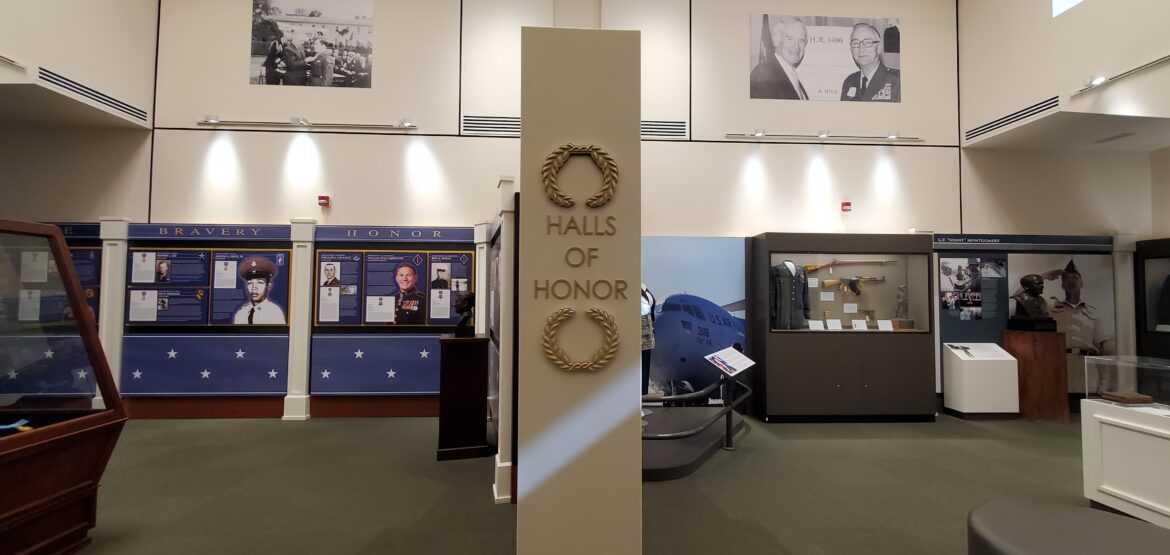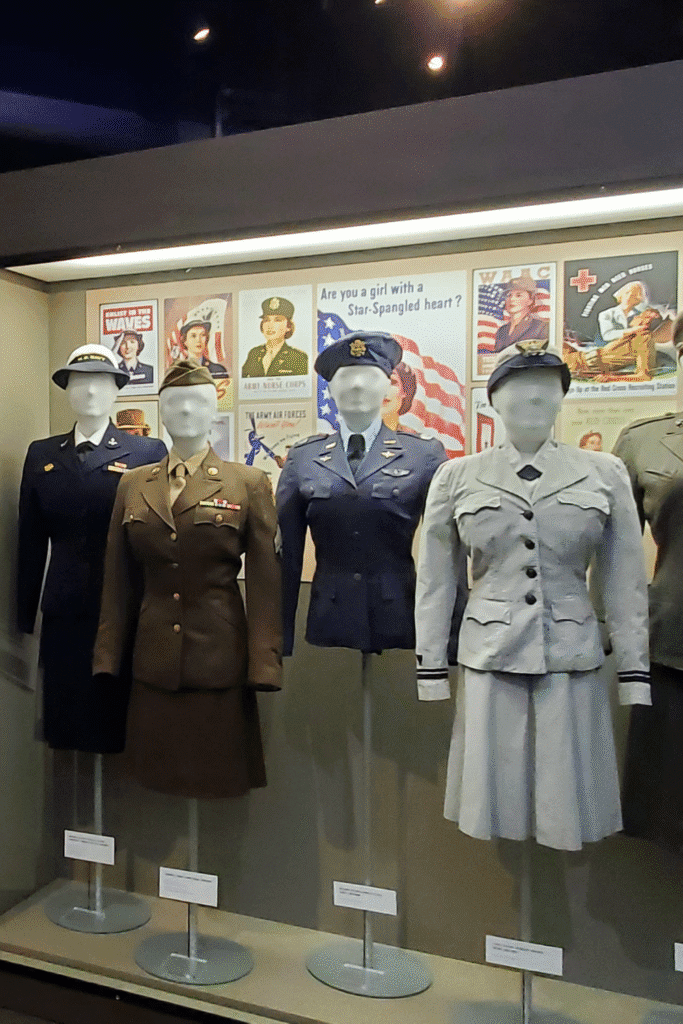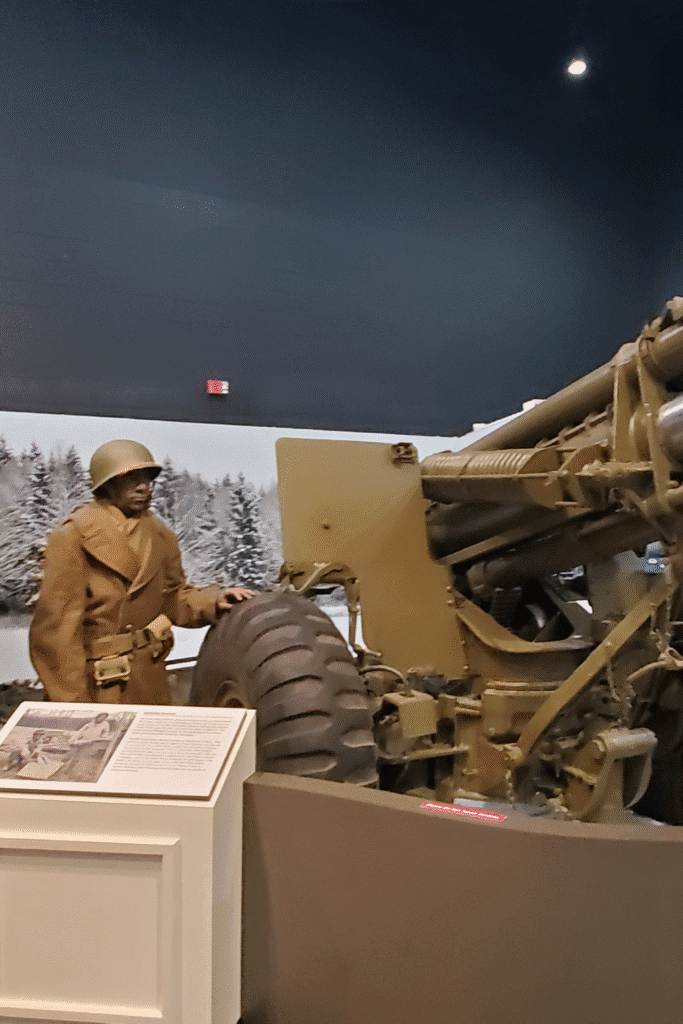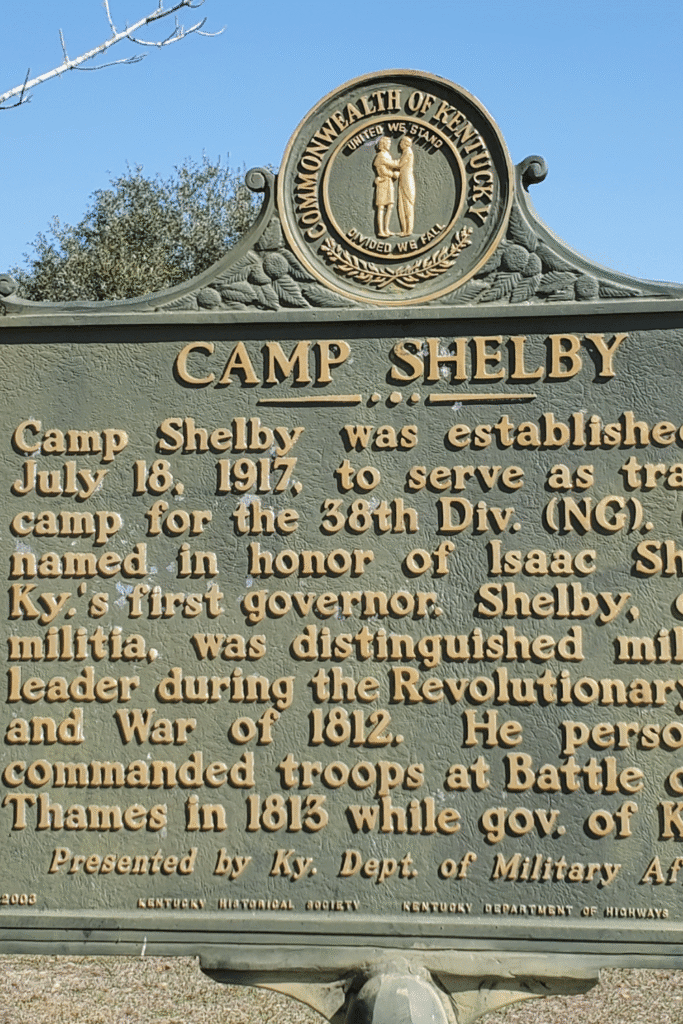
We may earn money or products from the companies mentioned in this post. This helps support what we do and in no way costs you a thing.
There’s a hush that falls over you when you arrive at the Mississippi Armed Forces Museum at Camp Shelby. Not because it’s quiet, though it is, but because of what greets you before you even step inside. Out on the grounds, aircraft and military vehicles stand frozen in time, each one a silent sentinel.

I found myself lingering there longer than expected, walking slowly among these giants. A Huey helicopter that once thundered low over jungles, a truck built to conquer roads no ordinary car could attempt, artillery that once shook the ground beneath it.
Now, their power is muted, their engines cold, but you can still sense the weight of what they carried—men, women, supplies, hope, and fear. It felt like being in the company of veterans who had stepped into retirement, their days of action over, but their stories still written in every dent, rivet, and faded coat of paint.
Weaving Through the Galleries
Inside, the temperature dropped and the light softened, almost as if the building itself knew how to set the tone. The galleries unfold in a kind of timeline, but I didn’t move in a straight line. I wove my way through, stopping wherever something caught my eye.
One of the first things I noticed was how the museum manages to make history personal. Yes, there are weapons and uniforms, but they’re balanced with letters, diaries, and photographs. I stood in front of a display of handwritten notes sent home during World War II, the pencil faded but still legible. Some were hopeful, some mundane, some almost unbearably sad. They weren’t written for me, but reading them made me feel like I had stepped into a conversation across time.
I lingered over a uniform, still creased from wear, imagining the shoulders it once covered. I caught myself staring at medals, thinking less about the ribbons and metal and more about what someone had to endure to receive them. The big pieces—the planes, the rifles, the machinery—were impressive. But it was the little pieces that tugged at me the most.

Mississippi’s Story in Service
As I moved from gallery to gallery, Mississippi’s role in America’s military history revealed itself in layers. Camp Shelby has been a training ground since World War I, preparing young soldiers for battles they couldn’t yet imagine. In World War II, the state became an important hub: the Mississippi Ordnance Plant in Flora produced shells, Gulfport Field trained airmen, and countless families supported the war effort from the home front.
Keesler Air Force Base in Biloxi rose to prominence as an electronics training center during the Cold War, shaping generations of service members who would go on to use those skills in conflicts across the globe. Mississippi’s National Guard has consistently stepped forward, whether in Korea, Vietnam, Iraq, or Afghanistan. Reading those stories in the museum reminded me how often the spotlight shines elsewhere, yet Mississippi’s contributions ripple through every chapter.

Walking Through Time
The Mississippi Military Timeline was one of the most engaging parts of the visit. It isn’t just a wall of dates—it’s a path you walk, guided by artifacts and interactive displays that place you in each moment. From the Civil War to modern deployments, each section offers a bridge between what we read in history books and the reality lived by soldiers.
Standing in front of a World War I helmet, I thought about the young men who left farms and small towns to fight in muddy trenches across the ocean. Moving forward, I stopped at a Vietnam-era display that included field gear, worn and weathered.
Nearby was a photograph of a young soldier, his smile bright, his eyes steady. Seeing his face beside the uniform made it impossible not to think about the gap between the boy who left and the man—or memory—that returned.

The Power of the Personal
What makes this museum feel different is the way it leans into personal artifacts. I kept coming back to the letters. Some were short, a quick “I’m fine, don’t worry.” Others stretched into longer reflections, the kind that must have been read and reread by families waiting at home.
There was a diary open to a single page, protected under glass, the handwriting uneven as if written in a hurry. Another display showed faded photographs tucked into helmets or pockets. These weren’t just exhibits—they were human reminders. It’s easy to look at wars as events, but here, you’re constantly reminded they were lived by individuals.

A Place to Pause
After hours inside, I needed to breathe. That’s when I wandered into the Memorial Garden. Compared to the packed galleries, the garden felt open and light, with plaques and monuments carefully arranged among greenery. It wasn’t crowded, and the quiet was comforting.
I found a bench and sat for a while, letting the stories settle. Inside, the voices of history seemed to press in, each one eager to be heard. Outside, the garden let those same voices stretch into silence. It was peaceful, but not empty—the kind of silence that lets you reflect without rushing to the next thing.
Why It Matters
The Mississippi Armed Forces Museum isn’t a place where you rush through, snap a few pictures, and check it off your list. It’s a place where you slow down. Where you read the notes, look closely at the uniforms, and let the silence of the Memorial Garden linger. For me, it wasn’t just about learning—it was about listening.
As I walked back to my car, I kept thinking about how easy it is to take places like this for granted. A museum might look like a collection of objects, but it’s really a collection of stories—and without places like the Mississippi Armed Forces Museum, those stories risk fading into the background.


